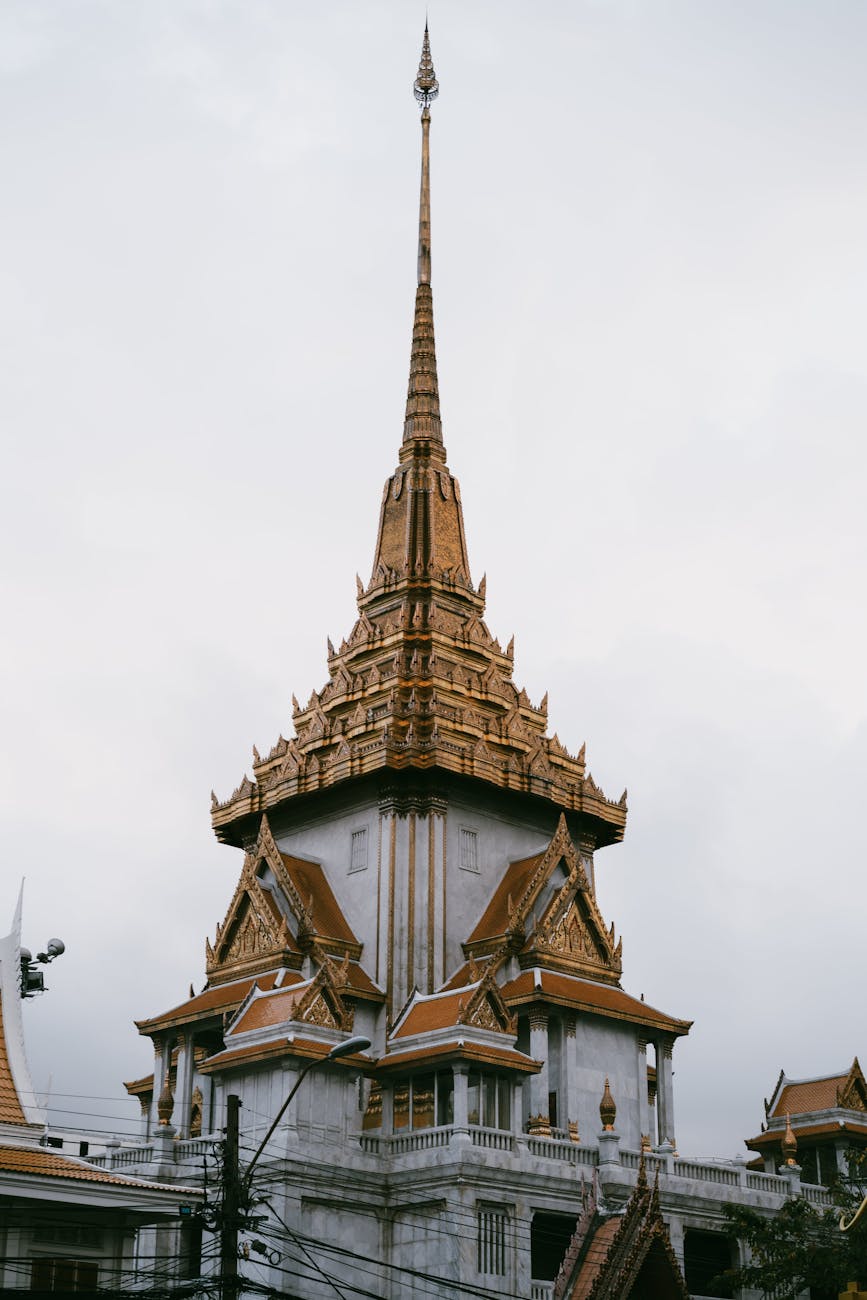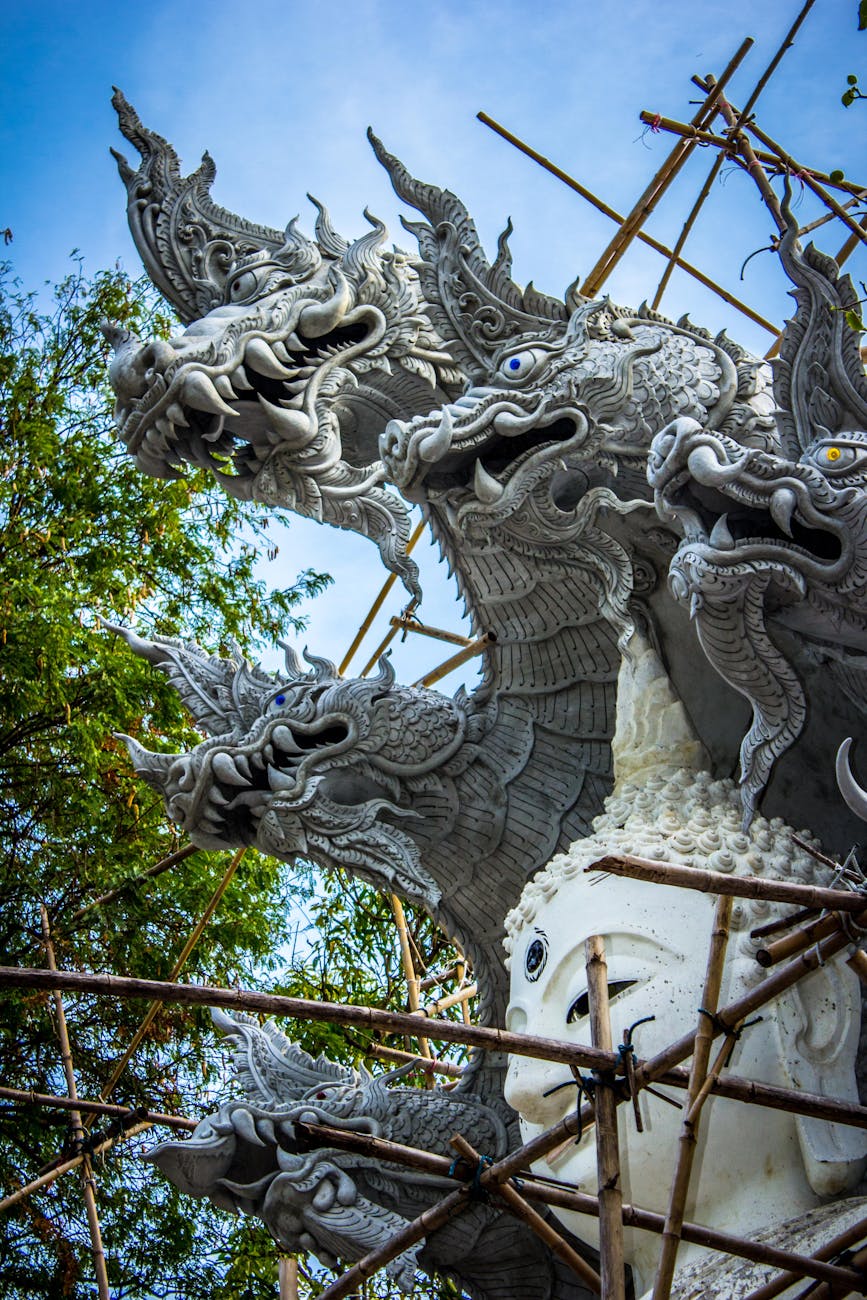A trip to Thailand is not just a vacation, it’s an unforgettable immersive experience. Among its stunning beaches and vibrant cities lies a hidden treasure: the enchanting world of Thai folk art. This post invites you to unravel the secrets behind Thailand’s mesmerizing folk art, showcasing how these artistic expressions reflect the country’s rich cultural heritage. From intricate handcrafted items to colorful murals, Thailand’s folk art provides a fascinating insight into the lives of its people.
Delve deeper into this captivating aspect of Thai culture and discover why its folk art continues to charm millions of visitors each year. This blog post will explore various forms of folk art, highlight local artisans, and provide tips on how to appreciate and even partake in these artistic traditions while visiting Thailand.
Table of Contents
- What is Thai Folk Art?
- Types of Folk Art in Thailand
- The Significance of Folk Art in Thai Culture
- Meet Local Artisans
- Experiencing Folk Art in Thailand
- Actionable Insights: How to Engage with Thai Folk Art
- Embodying the Spirit of Thailand through Folk Art
- Frequently Asked Questions
What is Thai Folk Art?
Thai folk art is an amalgamation of traditional craftsmanship and cultural storytelling that resonates with both locals and visitors. Defined broadly, it encompasses a wide range of artistic expressions that are deeply rooted in rural life, spirituality, and the natural landscape of Thailand. Folk art reflects the everyday experiences of the Thai people, incorporating their beliefs, dreams, and even superstitions into visually stunning creations. Various forms include weaving, pottery, wood carving, and painting, all crafted either by hand or using time-honored techniques passed down through generations.
Each piece of folk art tells its own story and allows for a deeper understanding of Thailand’s diverse cultural identity. By examining the intricate patterns, vibrant colors, and symbolic representations in folk art, you immerse yourself in a narrative that spans centuries, showcasing the evolution of Thai traditions alongside modern influences. Engaging with these artifacts presents an authentic glimpse into the soul of Thailand, enriching your overall travel experience.
Types of Folk Art in Thailand
Exploring the diverse forms of Thai folk art reveals a treasure trove of creativity. Among the most notable types are traditional handwoven textiles such as silk and cotton, often adorned with exquisite patterns that differentiate various regions. For example, the intricate designs found in Northern Thai textiles are unique in their colors and motifs, telling stories of local folklore. Additionally, the art of pottery in Thailand cannot go unnoticed; each piece varies widely by region, with Southern Thailand being famous for its glazed pottery, often used for ceremonial purposes.
Moreover, woodcarving is prevalent, where artisans transform ordinary wood into elaborate sculptures or functional items, rich with symbolism. Murals painted in temples are an important aspect of Thai folk art, illustrating historical events and spiritual teachings, thereby serving both educational and decorative purposes. Each of these artistic forms resonates with history and tradition, contributing to a colorful tapestry representing Thailand as a whole.
The Significance of Folk Art in Thai Culture
Understanding the significance of folk art in Thai culture reveals how integral it is to national identity. Folk art serves not only as a means of expression but also as a vital cultural preservation tool. Every piece crafted carries a history that chronicles the socio-economic and religious influences that have shaped communities across Thailand. Through festivals and rituals, these art forms are often showcased, reinforcing communal bonds while educating future generations about their heritage.
Furthermore, folk art plays a pivotal role in the economy by supporting local artisans and attracting tourism. Visitors to Thailand often seek authentic experiences, and the chance to witness or even participate in folk art workshops offers a unique opportunity to forge deeper connections with local culture. Therefore, folk art functions as a bridge between the past and present, ensuring that Thailand’s rich traditions continue to flourish amid modernization.
Meet Local Artisans
Connecting with local artisans is an enriching aspect of exploring Thai folk art that goes beyond mere observation. These skilled craftsmen and women are the keepers of traditional techniques, often working tirelessly to preserve and innovate their art forms. By visiting villages and workshops, you are not only witnessing the creation of exceptional pieces but also gaining insights into the artists’ personal stories and motivations. Many artisans are eager to share their knowledge, providing demonstrations that allow visitors to appreciate the intricacies involved in their craft.
Interacting with these artisans also opens avenues for meaningful conversations about their challenges, aspirations, and the impacts of modern technology on traditional practices. Buying directly from local creators supports their livelihoods and sustains the traditional art scene. Such experiences enhance your journey, transforming a simple trip into a celebratory homage to the artisans’ dedication and skill.
Experiencing Folk Art in Thailand
Experiencing folk art in Thailand can take various forms and extends beyond simply admiring the finished products. Engage directly with art through workshops offered in many regions, where you can learn traditional skills like bamboo weaving, pottery making, or silk painting. These hands-on experiences provide invaluable lessons and a deeper appreciation of the artistic processes involved. Many cultural centers and local markets host performances showcasing traditional music and dance, often accompanied by stunning costumes and artistry that bring the stories behind folk art to life.
Additionally, festivals celebrate folk art and allow visitors to immerse themselves in the cultural vibrancy of Thailand. For instance, the annual Chiang Mai Flower Festival features stunning floral float displays, combined with traditional dance and costumes that capture the essence of folk artistry. By participating in these events, you become a part of Thailand’s rich narrative, experiencing the dynamic interplay between tradition and contemporary culture firsthand.
Actionable Insights: How to Engage with Thai Folk Art
To genuinely engage with Thai folk art, it’s essential to approach your exploration with curiosity and respect. Start by seeking out local workshops and studios where artisans welcome visitors. This interaction enriches your experience while fostering a sense of community and appreciation for those who keep these traditions alive. Consider capturing photos or documenting your learning journey, but always remember to seek permission first to show respect for the artisans’ craftsmanship.
Furthermore, support local art by purchasing directly from artisans rather than mass-produced souvenirs. This not only ensures that their talent is recognized but helps maintain their livelihood and the continuation of their craft. Engage with local culture by attending art exhibitions or festivals, allowing yourself to be fully enveloped in the artistic atmosphere of Thailand. Such actions contribute significantly to preserving and promoting Thailand’s folk art legacy.
Embodying the Spirit of Thailand through Folk Art
Embracing Thai folk art allows you to experience the spirit of the nation in a unique and intimate way. You gain insights into the cultural values, beliefs, and everyday life of its people through every mural, sculpture, and textile. Folk art not only encapsulates stories of the past but also encourages a vibrant dialogue about the present and future of Thai culture. As you embark on your trip to Thailand, make a conscious effort to immerse yourself in these artistic traditions, and you will undoubtedly enhance your journey.
Being a part of this creative exploration fosters a deeper connection with the magical land that is Thailand. Your heart and mind will be invigorated by the beauty and history embedded within the intricate details of folk art. It’s more than art; it’s the essence of a nation, beckoning travelers to unlock the stories woven into the fabric of its culture.
Frequently Asked Questions
What materials are commonly used in Thai folk art?
Thai folk art often employs natural materials such as bamboo, clay, cotton, and silk. Each material tells a story and connects to the local environment and cultural practices.
Can I participate in folk art workshops while traveling in Thailand?
Absolutely! Many regions and cultural centers offer workshops for visitors, providing opportunities to learn traditional craftsmanship directly from local artisans.
Is there an age limit for engaging in folk art activities?
Most folk art workshops are family-friendly and welcome participants of all ages, though some activities may be more suited for older children and adults.
How can I support local artisans during my visit?
Purchasing directly from artisans, attending local markets, and participating in workshops are excellent ways to support the craftsmanship and livelihoods of local artists.
Are there any specific festivals dedicated to folk art in Thailand?
Yes, various festivals across Thailand celebrate folk art, offering a vibrant showcase of local crafts, performances, and cultural exhibits that visitors can enjoy.
Image Credit: Pexels





